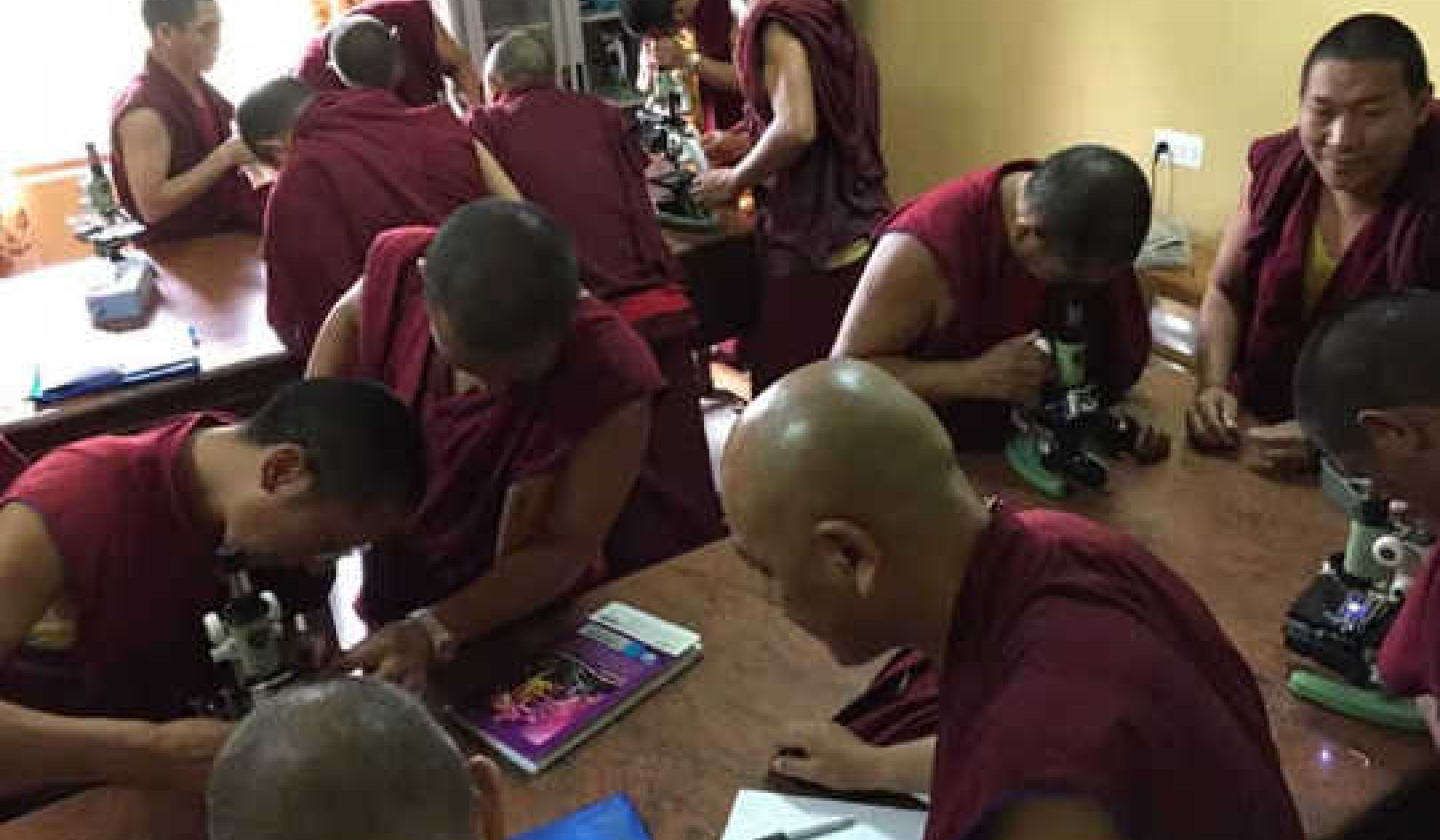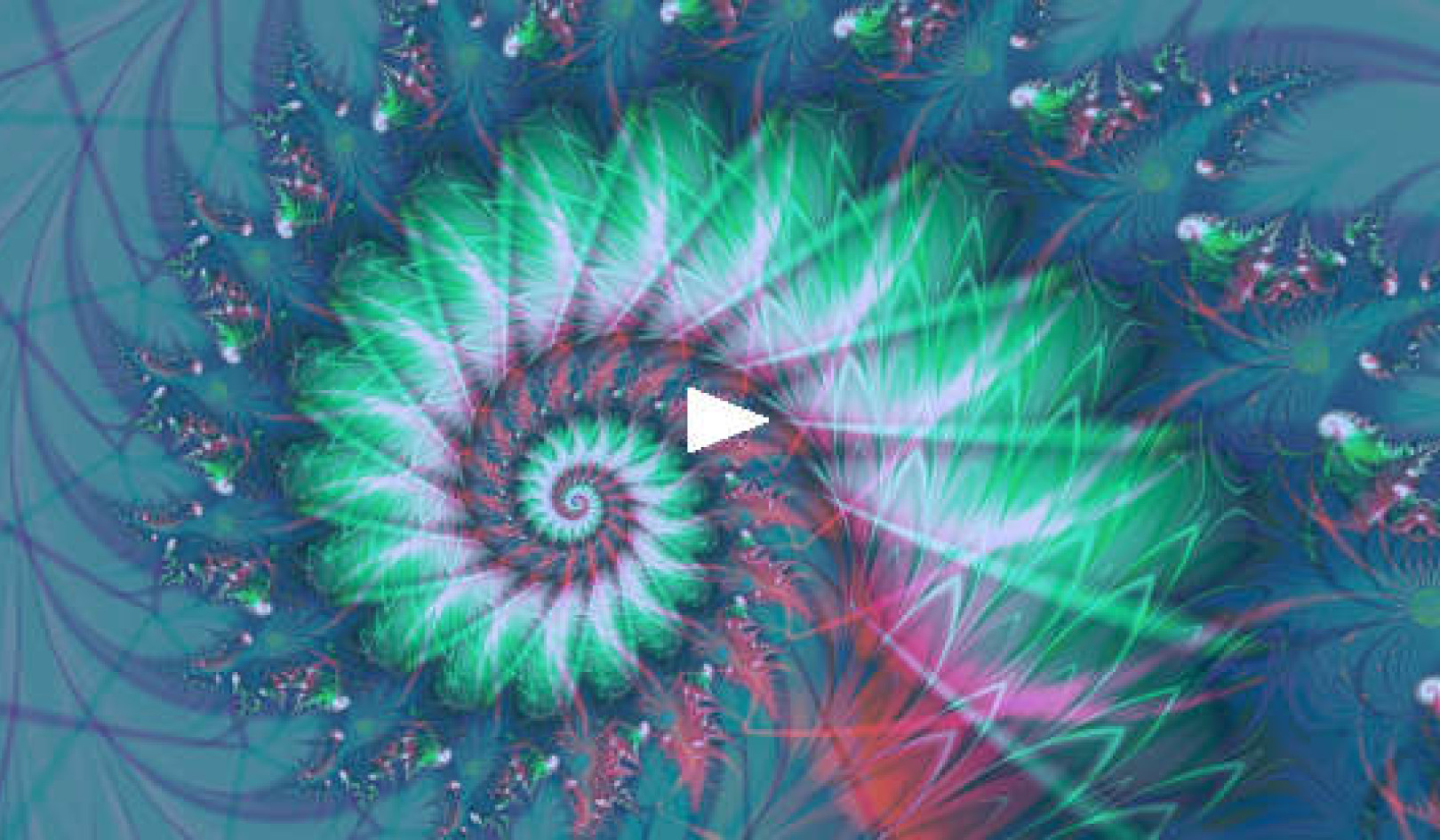
The rainbow has long been a symbol of hope, as white light passes through prisms of raindrops, and seven distinct colors are revealed. I think of the rainbow as a metaphor for the seven paths to God, which are likewise a part of what seems to be an indivisible whole -- each a precious reflection of one aspect of divine consciousness.
The pot of gold at the end of the rainbow is our relationship to God; happiness, gratitude, and the knowledge that we have been given unique gifts with which to serve.
The Number Seven in Ancient Traditions
The number seven has special properties in most ancient traditions. Religious historian Rosemarie Schimmel (The Mystery of Numbers) documents numerous references to the number seven in both the natural and supernatural worlds: seven seas and seven heavens, seven planets of the solar system, seven days of the week, and seven notes to the musical scale. Creation was fashioned in seven days -- including the Sabbath, or day of rest. Seven steps led to Solomon's temple, which was built in seven years. The Proverbs extol the Seven Pillars of Wisdom, and throughout the Old Testament, seven recurs as a power number.
In the New Testament, Jesus prescribes that we forgive 70 times 7. In the Book of Revelation, Christ held seven stars in his hand, seven seals are opened, letters are sent to the seven churches, seven trumpets announce the Judgment Day, and seven angels pour out seven bowls of tribulation. There are seven sacraments, seven deadly sins, and seven charisms, or gifts of spirit.
There are seven branches to the Tree of Life in Kabbalistic Judaism. Sufism, the mystical aspect of Islam, states that the mind of God unfolds into the human intellect in a seven-step process. The Buddha sought enlightenment for seven years and circled the Bodhi tree seven times before settling beneath it for his final meditation prior to enlightenment.
Hinduism is also based on a system of sevens, including a medical/philosophical understanding of the lifeforce energy, or prana, that powers the human body. Prana circulates in nadis, similar to acupuncture meridians, that flow into seven wheels of energy called chakras.
In the tradition of the Native American Medicine Wheel, there are seven sacred directions. Beneath our feet is Mother or Grandmother Earth. Above us is Father or Grandfather Sky, the direction of Wakan Tanka, the Great Sacred Mystery. To the East lies the power of the rising sun. To the South lies abundance and creativity. To the West lies transformation. To the North lies wisdom. The seventh direction, where all energies come together, is within our heart.
In this book, we will consider how the seven directions and the seven chakras reveal seven paths to God. Although we will discuss these paths in a sequence that may seem linear, one path is no more "advanced" than another. They are simply different expressions, distinct rays of energy that each of us embody.
Path One: The Everyday Mystic
Path One corresponds to the color red, the blood of the womb of our physical mother, and to the fiery womb at the core of Grandmother Earth who nourishes us all. In the tradition of the Medicine Wheel, it represents the Earth, the direction Down. In the language of yoga, Path One flows from the root chakra, the place where the life-force energy is curled like a serpent, waiting to unfold the creative process of life.
Path One is earth-centered, home-centered. It is the domain of what I call the everyday mystic, who sees the Creator in every bush and tree, in the gifts of food and shelter, in nurturing and in the fulfillment of the everyday needs of life. It is the path of gratitude and caretaking of the earth and all her creatures.
The Path-One mystic embodies a trusting, powerful, earth-centered spirituality like that of First Nations People, including the Native Americans. Their tribes had a strong sense of place and a history rooted in a particular geographical area. At one with the physical world around them, they perceived the interconnectedness of all things, the circular nature of the universe, and the rightness of both birth and death in the overall scheme of creation.
Path Two: Generosity of Spirit
Path Two follows the direction South on the Medicine Wheel, the summer season of increase and abundance when the earth bears fruit. This seasonal energy is related to the personal energy of the second chakra: sexuality and birth. Yoga science relates the creative second chakra to the Leydig cells that occur both in the ovaries and the testes. These cells synthesize testosterone and mediate our ability to carve out territory for ourselves, a niche in which we will bring forth the abundance of our soul, offering our gifts to the world.
In this path of creativity and abundance, male and female aspects join. Our male aspect provides the space in which our feminine aspect becomes the womb of creativity. In the Hindu tradition, this is called tantra yoga, the sacred marriage of male and female. The eight books I have authored, the mind/body program I helped develop, and the students I have mentored are the fruits of combining my male and female aspects. Offering these gifts to the world is pure joy, and the energy that comes back to me from those who receive them keeps the creativity flowing. The key to Path Two is generosity of spirit -- being secure enough in ourselves that we can receive from God and give to others in a way that encourages both of us to bring forth our creative gifts.
Path Three: The Passion to Serve
The third path follows the direction East on the Medicine Wheel, the spring season when the life-force returns after winter. In yoga science, this seasonal energy is carried personally within our solar plexus or adrenal center. East is the direction of the rising sun, the new day that brings the energy and power to dream a new world into being. Similarly, the third chakra is the powerhouse of action, the furnace of passion and emotion whose fire fuels our dreams and gives us the stamina to fulfill them. Think of Biblical prophets such as fiery Elijah, feisty martyrs such as Joan of Arc, or modern orators and visionaries such as Martin Luther King. These charismatic people emanate a kind of "fire in the belly," an undeniable passion that can either make people sit up and take notice or run for cover.
The basic question for Path-Three mystics is: "Whom do I serve?" If we serve ourselves, to the exclusion of others, as do dictators and power-hungry zealots such as Hitler, we fall into spiritual peril and are likely to add chaos, rather than creativity, to the universe. If we serve the world, we use our potential as co-creators with God. Path Three is what the Hindus call karma yoga, the path to God -- Union through service.
Path Four: The Way of the Heart
The fourth path follows the seventh direction of the Medicine Wheel: Within, and the fourth chakra, the heart or thymus center. The Path-Four mystic can truly say, "I love the Lord My God with all my heart, soul, and mind, and I love my neighbor as myself." The Hindus call this path bhakti yoga, the way of devotion. One may be devoted to a personal aspect of God such as Krishna, Jesus, Buddha, or the Mother Mary -- or to the realization that, when we see with the eyes of the heart, we can worship God within every person.
Yoga research correlates the heart chakra with the cardiac plexus and the thymus gland. The thymus is an organ of the immune system, and the cells that develop within it are called T -cells. The job of the immune system is to tell self from not-self. It is a boundary organ. In Eastern thought, the thymus regulates the boundary between earth and heaven. The heart chakra is the midpoint between the three lower and three higher energy wheels. It is represented in Hindu iconography by the six-pointed star, which in Judaism is the Star of David, or Solomon's Seal. It symbolizes the downward ray of God's energy, which meets the upward ray of human energy. The heart chakra is thus considered the meeting point of earth and heaven, karma and grace. Path-Four mystics such as Mother Teresa bring about heaven on earth through love.
Path Five: Thy Will, Not Mine, Be Done
The fifth path follows the direction North on the Medicine Wheel, the season of winter in which stories are told and we reflect on the natural order of the universe and our place within it. This impersonal energy of order is reflected personally in the fifth chakra, the throat or thyroid center that represents discipline, will, and responsibility. In Hindu philosophy, this is the path of raja yoga God -- Union by following the specific moral disciplines that preserve the community, honor life, and lead to personal growth. For the observant Jew, it means carrying out the letter of the law as prescribed in the Torah and the Talmud, with one's whole heart and mind.
The Ten Commandments, like the Buddhist precepts for living and the Hindu system of raja yoga, provide a template for using our human will to live in accordance with the divine will. Those who take such commandments to heart struggle with moral dilemmas: Is war ever righteous since it violates the commandment against killing? Is abortion a sin, and is it any less of a sin to bomb an abortion clinic to stop it?
Many Path-Five mystics walk a narrow line between obedience to God and blind zealotry. Like St. Paul, they can be dangerous when doing their own will, but inspired and inspiring when doing God's will. The bottom line for Path Five mystics is whether their acts are kind and compassionate -- not in the abstract, but in the particular moment -- and for the particular person with whom they are interacting.
Path Six: Contemplation and Transformation
The sixth path follows the direction West on the Medicine Wheel, the fall season when the life-force energy withdraws and nature goes to sleep. The abode of the setting sun, west is the direction of the ego death that makes room for rebirth into spirit. This is often accomplished by undergoing a dark night of the soul, like the Buddha, when our old life is left behind and we enter a period of wandering or searching before the sun of enlightenment rises.
When we awaken to our new life, we see things not through our physical eyes, but through the wisdom eye. As Jesus said, "Your eye is the lamp of your body; when your eye is sound, your whole body is full of light; but when it is not sound, your body is full of darkness."'
Yoga science relates the sixth chakra to the pineal gland, a vestigial third eye complete with light receptors, which the French philosopher Rene Descartes called the "seat of the soul." It has long been linked with higher intuition, "medicine," or teaching dreams and visions.
The dark night of transformation calls out the question: "Who am I? Am I just this body, or I am something more?" In answering this question, the Path-Six mystic is called to deep meditation and contemplation. These practices help her to shed the ego's attachments to praise and blame, tragedy and triumph. Through them she develops the contentment, equanimity, and compassion of one who has communed with God and knows the beauty of life, beyond the appearances of suffering and limitation. In the Hindu system, Path Six corresponds to jnana yoga, the path of insight.
Path Seven: The Way of Faith
The seventh path follows the direction Above in the Medicine Wheel, representing the action of Wakan Tanka, the Great Sacred, or the Great Spirit, as it is often translated. In yoga science, it correlates with the seventh, or crown chakra, where the life-force energy enters the body and God becomes manifest in physical form.
Our faith is an important determiner of openness to Spirit. The nature of our faith develops and changes throughout the lifecycle, through the dark nights of the soul when we are challenged to transform, and through the work we do on the different spiritual paths. Eventually we have the faith to recognize that grace is a paradox; apparently wonderful events can curb our growth, while devastating events may spur it. We then receive the higher grace of nonattachment.
If we follow our spiritual path and do the required psychological healing along the way, we set the stage for God Union. But we will never get there through works, for ultimately, God-Union is a grace, the unearned gift of a generous parent to her child. Whether it occurs while we are in this body or when we have been reborn to the Spirit World is not important, nor within our control. And since the state of union is sometimes beyond the capacity of our perceptions, its truest measure is in the kindness, creativity, charity, and compassion that are the fruits of Spirit made manifest in our life.
Your Primary and Secondary Path
We are each working with the energy of all seven directions, all seven chakras, but in my experience each of us has one primary and one secondary, or supporting, path on which we concentrate the majority of our energies. Our primary path is the one through which our major contribution to the world will be made. It comes naturally to us. For instance, Path Two -- creativity and abundance -- represents my work in the world. My greatest joy is to write and teach and to help others recognize and use their gifts. I love to study -- as a doctorate, three postdoctoral fellowships at Harvard Medical School, writing eight books, and being a lifelong learner -- demonstrate. These are natural talents necessary to fulfill my soul purpose. While I had to develop them, the raw material was already there.
My secondary path relates to the seventh direction, Within, or the heart chakra. Our secondary spiritual path is often based on a wound whose healing will develop qualities that we need in support of our primary purpose. All my life I could easily give love, but for reasons stemming from my childhood, felt unworthy to receive it. So the love I gave was of a limited type, calculated to get people to like me. I had trouble giving people honest feedback about behaviors that hurt me, for fear they would be angry with me. I also had to learn that giving people everything they want may disempower them, rather than helping them bring forth their gifts. In order for me to use my gifts as a Path-Two teacher, I had to learn about love, a process that continues to unfold.
In addition to our primary and secondary paths, we also learn to use the energies of the other paths as they are needed to fulfill our purpose. With time you will recognize how working with the different paths can help you develop skills and attitudes that may not be innate, and which you will need at different times in your life and work.
Reprinted with permission of the publisher,
Hay House Inc. ©1997. http://www.hayhouse.com
Article Source
7 Paths to God: The Ways of the Mystic
by Joan Borysenko, Ph.D.
 An excerpt from the book: "Just as many rivers lead to the sea, there are many paths to God. Each of the seven primary energy centers of the human body, the chakras, corresponds to a specific path." In this book, those paths are outlined, complete with spiritual exercises, giving the reader a sense of the most fruitful direction for their journey.
An excerpt from the book: "Just as many rivers lead to the sea, there are many paths to God. Each of the seven primary energy centers of the human body, the chakras, corresponds to a specific path." In this book, those paths are outlined, complete with spiritual exercises, giving the reader a sense of the most fruitful direction for their journey.
Info/Order this book. Also available as a Kindle edition.
About the Author
 Joan Borysenko, Ph.D., has been described as a respected scientist, gifted therapist, and unabashed mystic. Trained at Harvard Medical School, where she was an instructor in medicine until 1988, she is a pioneer in mind/body medicine, women's health, and the author of several books, including the bestselling Minding the Body, Mending the Mind; The Power of the Mind to Heal; Inner Peace For Busy People; and A Woman's Book of Life.
Joan Borysenko, Ph.D., has been described as a respected scientist, gifted therapist, and unabashed mystic. Trained at Harvard Medical School, where she was an instructor in medicine until 1988, she is a pioneer in mind/body medicine, women's health, and the author of several books, including the bestselling Minding the Body, Mending the Mind; The Power of the Mind to Heal; Inner Peace For Busy People; and A Woman's Book of Life.




























